Who is Dr. Robert Cialdini and why listen to him?
Robert Cialdini is probably the world’s top expert on the psychology of influence.
He wrote the incredible book Influence in 1984, which many people believe is one of the best books ever about marketing and social science. The billionaire Charlie Munger very often recommends this book. Scott Adams calls Cialdini the “Godzilla” of persuasion because of how influential his ideas have become.
Cialdini was a professor at Arizona State University for many years and guest lectured at Stanford and other universities. This is good because his ideas in are usually backed up by scientific studies. He was also a top advisor for Obama’s winning presidential election campaign.
So let’s now start this book summary with the first lesson…
🗣️ 1. What is Pre-Suasion?: Increase your influence by making people receptive to your message BEFORE they hear it
Sun Tzu said, “Every battle is won before it is fought.” We all fight many small battles in our lives. Battles when we need to persuade someone to our way of thinking.
- Maybe you want to convince an important person to work on your business project.
- Maybe you want agreement with your partner on how to raise the kids.
- Maybe you want more people paying attention to your marketing so you can grow your business.
Well, good news! This book promises to help us do all these things more easily.
Persuasion vs. Pre-suasion
Let’s begin by clarifying the difference between regular “persuasion” and what Cialdini is calling “Pre-suasion.”
Most people know “persuasion” means getting someone to say YES. Getting them to sign that contract or agree to your way of thinking. But what does PRE-suasion mean? I’ll let Professor Cialdini tell you in his own words…
Pre-suasion—the process of arranging for recipients to be receptive to a message before they encounter it.
You see, Cialdini spent many years studying top salespeople, negotiators, marketers and public relations experts. And after careful study, he noticed something all the top achieving professionals in those fields had in common:
The highest achievers spent more time crafting what they did and said before making a request. (…) They didn’t rely on the legitimate merits of an offer to get it accepted; they recognized that the psychological frame in which an appeal is first placed can carry equal or even greater weight.
So Pre-suasion is everything you do BEFORE making a request from someone. There are practical ways of making people more receptive to your proposals before you make the request, offer or proposal. And that means they will be more willing to say yes to you. Obviously, this knowledge could be very useful for many of our careers or businesses.
For example, Cialdini had a colleague doing very expensive consulting work for large companies. His colleague often complained that companies always tried to make him lower his fees. Then one day he stumbled on a technique that made the companies stop arguing about his prices.
After his standard presentation and just before declaring his ($75000) fee, he joked, “As you can tell, I’m not going to be able to charge you a million dollars for this.”
When he made this joke, he noticed the company did not challenge his actual fee. So he began telling that joke on purpose after his other sales presentations and noticed the other companies now didn’t argue about the fee. That’s pretty weird, isn’t it? Cialdini’s colleague accidentally discovered that mentioning one million dollars—even as a joke—made companies stop complaining about his real price. Why? Because thinking about $1,000,000 first makes $75,000 then feel cheap by comparison.
My colleague claims that this tactic of mentioning an admittedly unrealistic price tag for a job doesn’t always win the business—too many other factors are involved for that—but it almost always eliminates challenges to the charges.
Price Anchoring
This trick is actually called “price anchoring“. Although most people don’t know about this trick, the smartest marketers use it all the time.
Steve Jobs often used price anchoring in his presentations. For example, when he was announcing the first iPad, he first showed a price of $999 on the big screen behind him. He said a thousand dollars was the price most people expected to pay for this new device. Then he revealed the real price which was $499 and many people in the audience began cheering. $499 suddenly felt really cheap in comparison.
Another way of price anchoring is to show customers your most expensive product first. Afterwards, the less expensive products suddenly feel like a great value. Salespeople are often trained to do this. For example, a $500,000 house can feel pretty expensive. But if the real estate agent has just shown you a few million dollar homes, then it suddenly feels very reasonable.
Price anchoring is just one example of we you can set up a certain psychological frame in people’s minds. Notice none of these techniques involve arguing with people that the price is fair. Instead, when you put a large price in your customer’s mind at the beginning, it automatically makes your real price feel small BY COMPARISON. So what you do BEFORE you show your price to customers can have a huge impact on how they perceive your price. These have been just a couple examples to demonstrate the power of Pre-suasion.
There are ways to make people more open or willing to say yes to your request, offer or proposal. For example, mentioning a high price can later make your real price feel much cheaper by comparison, reducing price resistance.
👀 2. The Importance of Attention: Pay attention to something, and it will automatically seem more important to you
Daniel Kahneman was Professor of Psychology at Stanford University and he won the Nobel Prize in Economics. He’s written some very smart books and deeply understands how humans behavior works. So a few years ago someone asked him how could regular people like you and me make better decisions. And he said the biggest idea is this:
“Nothing in life is as important as you think it is, while you are thinking about it.”
Daniel Kahneman
Remember, this is one of the world’s smartest people in psychology, human behavior and economics. And he’s saying:
“Nothing in life is as important as you think it is, while you are thinking about it.”
Daniel Kahneman
Here’s an example from Cialdini’s book: Most of us believe if we suddenly couldn’t use our legs then we would be miserable. Yet when you look at scientific studies, paraplegics are about as happy as the average person.
You see, right now when we think about being a paraplegic, we focus on the ONE big negative, which is not being able to use our legs. This thought makes most of us feel terrible. Yet real paraplegics are NOT thinking about their disability most of the time. Most of the time, they’re focused on other things, like work, a hobby, tv show or conversation with a friend. The same things the rest of us are generally focused on. So there’s a BIG lesson here.
When your attention become narrow, you will overestimate the importance of that ONE thing you’re paying attention to. In short, attention equals importance.
Agenda-Setting Theory in Media
Let’s talk about one way the mainstream media takes advantage of this idea. Have you ever heard of something called agenda-setting theory? Here’s how Cialdini describes it in the book:
The central tenet of agenda-setting theory is that the media rarely produce change directly, by presenting compelling evidence that sweeps an audience to new positions; they are much more likely to persuade indirectly, by giving selected issues and facts better coverage than other issues and facts.
So the experts believe that news and media usually can’t change people’s minds directly using new facts or evidence. (If you have talked about politics with anyone who is very left or right wing, then I’m sure you already know how true this is!)
But what the media CAN do is change what issue is getting the most attention. They can at least control what is being talked about. And so if an issue is being given a lot of attention and coverage, then people will automatically assume it’s important. The other issues sort of fade into the background and are forgotten.
What this also means is that being able to capture, direct and hold people’s attention is very important to persuading them. So attention is what the next lessons will be about.
Attention = importance. We overestimate the importance of whatever we are paying attention to right now. Through agenda-setting theory, the news and other media know they can influence the public not by changing minds, but by directing attention to certain issues and not others.
👉 3. Redirecting Attention: Point someone’s attention in a new direction and they often forget previous priorities
Usually, we try to persuade people by arguing with them, convincing them or giving them reasons. But that’s actually the hardest way to change someone’s mind.
It’s a lot easier to change what someone is paying attention to. If you can change what direction they are focusing in right now, then you can often change their decision, at least in this moment.
This is so important because our attention is limited. We can only really pay attention to one thing at a time. So when something new grabs our attention, then we must immediately let go of thinking about other things. Here’s what Professor Cialdini says about this:
We are said to “pay” attention (…) when attention is paid to something, the price is attention lost to something else. Indeed, because the human mind appears able to hold only one thing in conscious awareness at a time, the toll is a momentary loss of focused attention to everything else.
For example, when Donald Trump is asked a difficult question, one of his favorite techniques is called “shifting the ground.” So if a reporter asks him about the negative effects his new construction project will have on the neighbourhood, Trump doesn’t argue that the negatives will be small. Instead he talks about all the jobs and other positive effects his building will bring.
This technique helps him transform a negative question into a positive answer. It’s not about debating the question directly, but rather talking about something related to the question that is positive, smoothly shifting the focus. He openly talks about this and his other techniques for negotiation in his book The Art of the Deal, for which we have a summary. I definitely recommend it.
Asking specific questions
Asking specific questions is a powerful way of focusing people’s attention exactly where you want it. Through pre-planned questions, someone’s attention can be redirected into a specific direction.
In one Canadian study, people were asked on of two questions. They were either asked “Are you happy with you social life?” or they were asked “Are you UNhappy with your social life?” Those questions sound almost identical, but here’s the surprise. The people asked if they were UNhappy were 375% more likely to say they were! What the heck is going on here?
Cialdini says these two questions create very different “attention tunnels.” When someone is asked if they are unhappy with their social life, the word “unhappy” makes them search their mind for recent unhappy memories. And because that’s what they’re searching for, that’s what they find! They remember the moments they felt lonely.
But when asked “are you happy with your social life?” people search their mind for recent happy memories. Even if there were only a few happy social experiences, those are the memories that arise at that moment. And this tiny change in how the question is asked, totally changes what people are thinking at that moment, and totally changes how they answer the question. And that’s why the people who were asked if they are unhappy with their social life were 375% more likely to say they were!
In fact, Cialdini says this is a big problem with many polls and surveys. If someone asks people “are you happy with the president?” they will get very different answers than asking “are you UNhappy with the president?” The way the question is asked will change what people are focused on at the moment and how they respond!
In another study, scientists were asking people to fill out a survey in a shopping mall. They found that 29% of random people agreed to fill out the survey. Not bad. But then the scientists tried a social experiment. Before asking someone to fill out the survey, they first asked “Are you a helpful person?” After asking this question, 77.3% of people agreed to fill out the survey! From 29% to 77%! That’s huge, more than double the number of people saying yes.
While most of us believe we are nice and helpful people, we don’t really have time to stop and help everyone. However, if you tell someone you consider yourself a helpful person, then right after it would feel weird to refuse to help with their survey, right? This is a great example of pre-suasion. The little question before the request shifts the other person’s attention so they are a lot more likely to say YES to your next request.
Our attention is limited. When we pay attention to one thing, we are forced to ignore everything else. This means asking questions can be a powerful way to prepare the ground for a request. For example, if a researcher first asks someone “Are you a helpful person?” then that person becomes twice as likely to help fill out a survey right after.
🚨 4. Capture Attention: Stimuli like sex, danger and novelty are the most effective for grabbing people’s attention
Based on his research in science and biology, Professor Cialdini says people’s attention is attracted most by cues related to sex, danger and anything that looks new or different. Let’s look at these one-by-one:
1. Sex
Sexual cues get people’s attention. Most of us understand this right away because we see how it works in our daily lives, especially in the context of dating.
Advertising and media pros also understand this and they deliberately take advantage of our reproductive wiring. That’s why the magazines often show a half naked airbrushed person on the cover. Advertisements deliberately use models, models are people who are more attractive than average almost by definition. As a result, we often can’t help but look. And while we’re looking, we also notice their headlines and products too. As the old advertising saying goes, “sex sells.”
Studies show using sex to grab attention is especially effective when selling something that helps someone be more attractive or find a mate. This includes cologne, stylish clothes, sports cars, and so on. Using it as an attention grabber for random products like bread is not as effective. Which makes sense.
2. Danger
The deepest instinct of any animal is to survive. This means our human brains are wired with physical survival as the number one priority. This is how your ancestors over the past millions of years were able to survive, even being hunted by tigers in the African grasslands. They were always on the lookout for danger.
And that’s why news of danger or threat is such an attention magnet. Your brain wants to keep a close eye on anything dangerous so it can’t kill you. The big corporations which produce the news understand this very well, so they often report on violence and disasters, even if they are happening on the other side of the world and so barely relevant to most of their viewers. Here’s what Cialdini writes about this:
Certain cues seize our attention vigorously. Those that do so most powerfully are linked to our survival. Sexual and violent stimuli are prime examples because of their connections to our fundamental motivations to reproduce on the one hand and to avoid harm on the other—life and death, literally.
Cigarettes became popular because of powerful marketing. Big companies used icons like the rugged cowboy “Marlboro Man” to make people associate sticks of tobacco with masculinity and strength. Later Edward Bernays designed a propaganda campaign to make women smoke by labeling cigarettes as feminist “Torches of Freedom.”
(If you want to learn more about the psychology behind these ad campaigns in detail, then look at our summaries of the books Contagious by Jonah Berger which talks about the Marlboro Man ads and Propaganda by Edward Bernays. Fascinating stuff.)
But the number of smokers dropped dramatically since 1950. What happened? Well, people became aware of the dangers of smoking, for themselves and their kids. Just as advertising was used to sell cigarettes, many governments and non-profits used advertising to make people aware of the dangers. For example, now when you buy a cigarette pack in many countries, you will see a gross black lung on the package.
According to Cialdini, studies show just scaring people doesn’t work. But if you first scare people a bit, then show them practical steps for how to avoid the danger, then can persuade them to change their behavior.
Even a small business can tap into some danger or threat to grow faster. For example, a personal gym trainer could explain to potential clients that belly fat is not just unattractive but actually deadly.
3. The New or Different
All animals instinctively want to go and investigate when there is something new or different in their environment. For example, if you can hear something rustling under your bed that might be a bug, then you’re obviously going to want to know what it is, right? Another example, when you walk into a home with a dog, the dog will always run over to sniff you. In science, this is called the “investigative reflex.” It probably exists in our brains so we can go make sure the new thing is not dangerous.
So if you want to grab attention, you must think about how can you be new, different and unexpected?”
Professor Jonah Berger who wrote the great book Contagious says, “One way to generate surprise is by breaking a pattern people have come to expect.” So this means you should consider what people are expecting to happen and then break that expectation by doing something different.
For example, imagine you’re an accountant sending out a sales letter to 100 local businesses that you want to hire you. The reality is that most people hate junk mail and will often put anything that looks like boring old advertising right into the trash.
So to grab their attention and make them at least open your letter, there’s a cool technique called “lumpy mail” which I learned from the marketing expert Dan Kennedy. From sending hundreds of thousands of sales letters, Kennedy found that adding a small object inside the letter greatly increases the sales. People can feel something inside the letter and they become curious. They open the envelope, find the object and start reading the letter. An accountant could for example add a small toy calculator inside each letter, it’s a small added cost but can easily pay for itself with just a couple new clients.
People are wired to pay attention to cues related to sex, danger, and the new/different. That’s why ads, movies and other media use attractive models. That’s why the news is always showing disasters, even if they happen on the other side of the world. We can also use these appeals to grab attention in our own projects. For example, by showing how your product can help people stay safe and healthy.
👤 5. Personalize Your Message: Hold people’s interest by making it all about YOU (them)
If you want to be a successful persuader, then you not only have to grab people’s attention but you also have to KEEP their attention. If you can’t hold people’s attention, then they will never hear your full proposal, sales pitch or video. (For example, if you want to be a Youtuber then you need people watching your whole videos not just the first 5 seconds.)
Cialdini says the solution is simple.
If you want to hold someone’s attention, then make your message all about them. After all, the most interesting thing in the world to most people… is themselves! So if you want to hold attention, then talk about THEIR interests, problems and worries instead of talking about yourself.
As the classic self-help author Dale Carnegie said: “You can make more friends in two months by becoming interested in other people than you can in two years by trying to get other people interested in you.”
Advertising studies found that adding the word “YOU” into an ad increases its effectiveness tremendously. So keep this in mind next time you’re speaking with someone, putting together a presentation or publishing some content online. Don’t use too many impersonal words like “people” or “they”… instead use the word “YOU.” And people will feel you’re speaking directly to them.
Another effective technique is to mention some personal detail about your target audience, like their age, sex or another personal characteristic. Have you ever heard those ads on the radio that start with a sentence like: “Attention men over 40 who want to lose at least 15 pounds.” They start like that because it works. It’s far more effective than an ad like: “Dr. So-and-so has been helping individuals decrease their BMI for over 10 years since he received his PhD from this university…”
Hold people’s attention by using the word YOU often and always talking in terms of their interests, concerns or problems.
❓ 6. Maintain Curiosity: Also hold interest by sharing incomplete stories and mysteries
Ever noticed how many popular TV series end each episode on a cliffhanger? For example, in the last minute, the main character has a gun suddenly pointed at his head. If you want to find out what happens next, then tune in next week! Why do they do this to us? Because it works!
Scientists have found that unfinished stories or tasks are remembered, while finished ones are quickly forgotten. The scientific word for this is “The Zeigarnik Effect.” People have a strong desire for closure. We don’t like unfinished stories, unanswered questions and unresolved problems. It bothers us when something is left unfinished. Yet as soon as we DO get closure about something, we then tend to forget about it quickly and move on.
So if you want to HOLD someone’s attention, don’t give them closure right away!
For example, many professional public speakers start their speech with a story. But they don’t finish the story right away. Instead, they switch to talking about something else. People want to hear the end of the interesting story, so they keep listening. Finally, near the end of the speech, they go back and complete the story. The audience finally gets closure and they can relax.
When Professor Cialdini was writing his first book, he wanted to understand what made some popular science books so interesting to the general public. So he read many of them, carefully deconstructing why certain sections were fascinating.
And what he found was that the best science writers were actually mystery writers! They first described a mystery, then slooooowly unfolded the scientific explanation for the mystery. This pulls people into the book because they want to know the solution to the mystery.
Leaving a story unfinished or telling a mystery is very good at holding attention. People will stay focused on you because they want to know how the story or mystery will finally be resolved. The scientific term for this is “The Zeigarnik Effect.”
🌐 7. Common Identity: A shared identity or deep similarity with someone creates deep trust and influence
In Cialdini’s first breakthrough book, Influence, he described six influence triggers. He says if he was writing the book today, he would include a seventh trigger called Unity.
Unity is when someone feels you are one of them. Unity is also about shared groups, shared identities and shared world views.
It’s about the categories that individuals use to define themselves and their groups, such as race, ethnicity, nationality, and family, as well as political and religious affiliations. A key characteristic of these categories is that their members tend to feel at one with, merged with, the others. They are categories in which the conduct of one member influences the self-esteem of other members. Put simply, we is the shared me.
A sure sign of unity is when people use the words “we” and “us.” Religious people don’t say “the church” or “the temple”, they say “our church.” Fanatical sports fans don’t say “the sports team won,” they say “we won” or “we lost.”
Eric Hoffer wrote an incredible book called The True Believer that demystified why people join large movements like Communism, Nazism, Fascism or Nationalism. He said, “the desire to belong is partly a desire to lose oneself.” People want to feel part of something bigger and more powerful than their fregile individual self. We have a summary of The True Believer that you can go read next.
We usually feel most “unified” with our families. This is part of our biology. While we may have friends that we have more in common with than our families, I bet most of us would be more willing to donate a kidney or risk our lives for family. Scientists have even measured that when you’re helping out a family member, part of your brain feels like you’re selfishly helping yourself. And by one way of looking at it, you ARE helping yourself or at least your genes, because we share genes in common with family. The evolutionary biologist Richard Dawkins wrote a book called “The Selfish Gene” which talks a lot about this.
Some groups have smartly figured out you can create feelings of unity by using words and language associated with family.
Collectives that create a sense of we-ness among their members are characterized by the use of familial images and labels—brothers, sisterhood, forefathers, motherland, heritage.
Another way to engineer feelings of unity is by making people act and move together. Studies found people dancing or singing together feel more at one. One study found that young children who danced with each other later became more generous about sharing toys. This is probably why so many cultures have some types of tribal or cultural dancing. This is also maybe the reason every army has soldiers marching together and often chanting. These collective actions create a sense of unity, making the soldiers more selfless in a future battle.
When people feel you are one of them, then you can influence them powerfully. This means you are both of the same family, group or tribe. Some groups use language related to family to encourage these feelings of unity like “brothers in arms.” Other groups use collective actions like dancing or singing together to promote unity.
🔗 8. Create Positive Associations: Create a new mental association between two things to shape people’s feelings
All of the thoughts, memories and ideas in your brain are interconnected. No thought exists on its own. These connections happened organically for most of human history. But recently, some people figured out these connections can actually be engineered in people’s minds.
I’m sure you’ve heard of the famous experiment of Pavlov’s dogs. There was a scientist named Pavlov who rang a bell every time he gave his dogs food. Later, he noticed that when he rang the bell, the dogs would already start to drool and salivate just at the sound. You see, Pavlov had created a new connection in his dog’s minds. He linked the bell sound to food so that now, every time he rang it, the dogs instantly were reminded of food.
Well, this what branding is all about—creating a connection between a company and positive feelings. So big marketers have basically turned us into Pavlov’s dogs. For example, what do you think of when you hear the word Gucci? I think of rich people? How about the car company Mercedes-Benz? I think of luxury. How about Apple? I think of creativity or being different.
These associations are NOT by accident. They were carefully engineered by the best businesspeople and marketers in the world. Here’s how Cialdini talks about it:
Advertisers have been using the tactic for more than a century: they present something that attracts their target audience—a beautiful vista, a good-looking model, a popular celebrity—and then link it to the product through nothing more than a simultaneous presence inside the ad.
The power these mental associations have over us can be totally hidden from us. For example, a scientific study was done in a wine store. They wanted to see if the music in the store had any effect on sales. So on days when they played classical German music, sales of German wine went up. And on days they played classical French music, sales of French wine went up! It was surprising to the researchers, to say the least.
A different book called “Contagious” explains how building “triggers” into your ideas or products will make people remember them more often. For example, one marketing campaign successfully turned coffee into a trigger for thinking about Kit Kat chocolate bars. As a result, sales of Kit Kat rose by over 33%. The strategy was to make a common everyday object into a “trigger” for the product, and it clearly worked.
All the thoughts in our brains are linked with connections. New connections can be engineered, like how the scientist Pavlov created a new link in his dog’s minds between food and the sound of a bell ringing. Branding is based on this idea. These connections can influence us even when we are unaware of them.
🚫 9. Avoid Negative Associations: Stop using words which create the wrong mental connections for your purpose
If everything in your mind is linked together, then every word you use can spark some old associations in people’s minds. So you need to be careful because certain words can have very negative associations.
Ciadini was consulting at an award-winning hospital. He noticed they had strict rules about the words and language used in the hospital. Most people think these little differences in language don’t matter. However, the management of this hospital was convinced this was one of the keys to their success. Here’s a quote of the hospital’s policies from the book:
“As a health care organization, we’re devoted to acts of healing, so we never use language associated with violence. We don’t have bullet points; we have information points. We don’t attack a problem, we approach it.”
Here’s a practical way Cialdini says we can use this new knowledge. Instead of telling customers the “cost” of something, say “investment” instead. The word “cost” is associated with losing money, while “investment” is associated with gain.
There was a scientific study where employees in a call centre instructed to raise money for some cause. They were given paper with work instructions. Half the workers received papers that included a photo of a runner winning a race, the other half didn’t include this photo. And guess what? The employees who had seen the photo of the winning runner raised 60 percent more money than the others. Scientists believe the photo raised achievement-related thinking in the callers and caused them to work harder.
The same effect happens with seeing words associated to winning:
Multiple studies have shown that subtly exposing individuals to words that connote achievement (win, attain, succeed, master) increases their performance on the assigned task and more than doubles their willingness to keep working at it.
I hope it’s becoming clear that small words can make a big impact. (And if you’ll excuse me, I need to go out and buy a big poster with the words “Achieve and Conquer” for my wall!)
Some words and language may have unwanted negative associations. You’ll want to avoid linking your message or product to these. Studies prove that exposing yourself to words and images related to winning has a positive effect on effort.
🤝 10. Build Trust: Leverage existing patterns of trust to build people’s trust in you
Trust is the most useful idea for people to associate you or your business with. If people trust you, they will believe what you are saying, they may purchase your product and they can feel safe forming a relationship with you. On the other hand, you absolutely want to avoid people associating you with dishonesty, lying and cheating.
Cialdini learned a sneaky trick for building an association of trust from a home alarm salesman named Jim. Jim claimed this simple technique allowed potential customers to trust him and made him the top salesperson in his company.
So Jim would enter the home of a family interested buying an alarm system. He started by asking the family to complete a test about home safety. Then every time he would do the same thing…
He’d slap his forehead and say, “Oh, I forgot some really important information in my car, and I need to get it. I don’t want to interrupt the test; so, would you mind if I let myself out and back into your home?”
The answer was always some form of “Sure, go ahead.” Oftentimes it required giving him a door key.
With every single family, Jim repeated this technique of pretending to accidentally forget something. Cialdini was following him for research and he finally asked why he did this routine every time. Jim replied:
“Think, Bob: Who do you let walk in and out of your house on their own? Only someone you trust, right? I want to be associated with trust in those families’ minds.”
So Jim didn’t ask the families to “trust him” directly. That would obvious not be effective. Instead, he had the families treat him like someone they already trust, by allowing him to leave and enter their home on his own. Pretty clever, right?
Trust is a very useful feeling for people to associate you with. As Jim’s story demonstrated, sometimes you can create an association of trust by making people treat you like someone they already trust.
Conclusion
As a very fast recap, the next time you’re trying to persuade someone, keep these three things in mind: Attention, Unity and Connections.
- Attention. Where do you need to direct someone’s attention? What specific question could you ask to guide their focus?
- Unity. Are you one of them? How can you show that? This will allow you to influence someone powerfully.
- Connections. What positive mental connections do you want for yourself or your product? What positive words or images can you bring up? What negative words should you avoid?
Professor Cialdini packed in a lot of provocative new ideas in this book. If you liked this summary, then definitely pick up the full book because there are a lot of interesting stories and tips we didn’t have time to cover here. Also, Cialdini’s first book “Influence” is a must-read, if you’re at all interesting in marketing or psychology. Keep an eye out for our note on that book in the future.

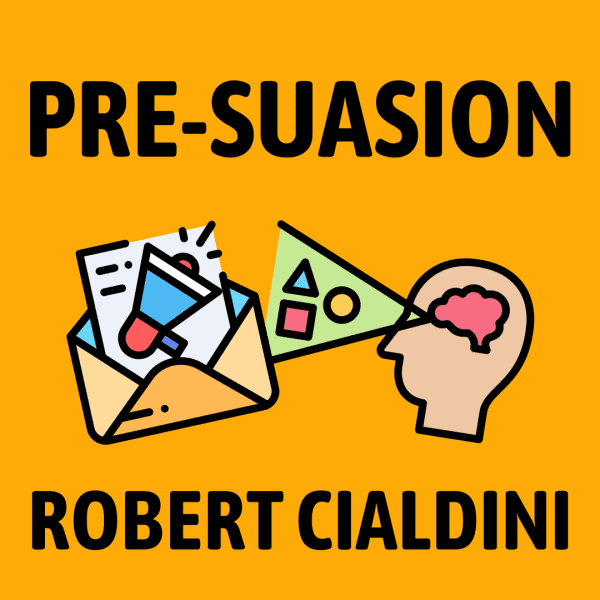

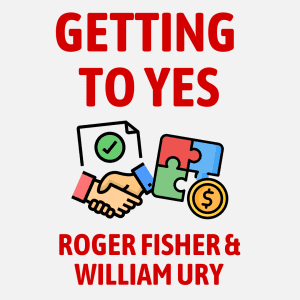
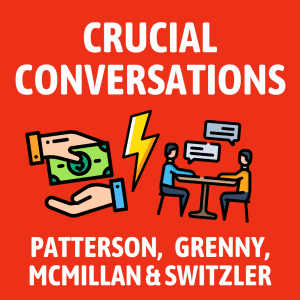



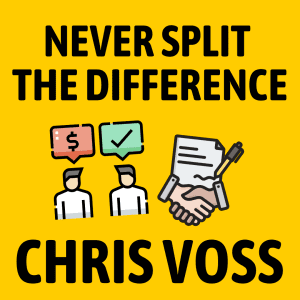
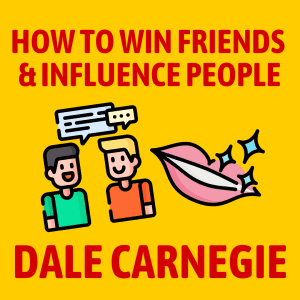
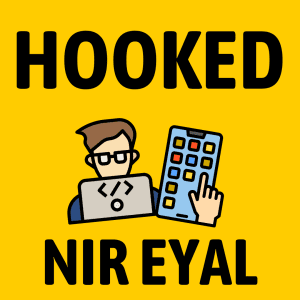
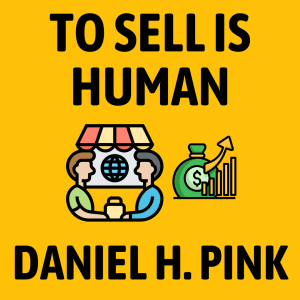





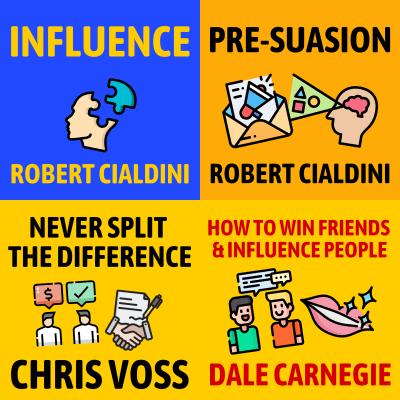

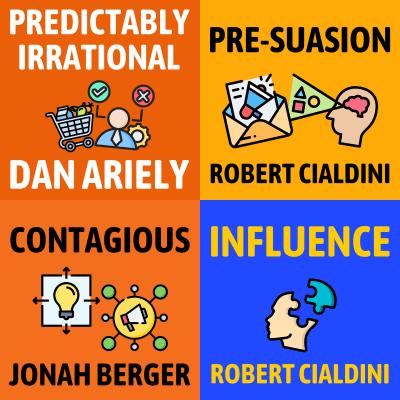











Community Notes